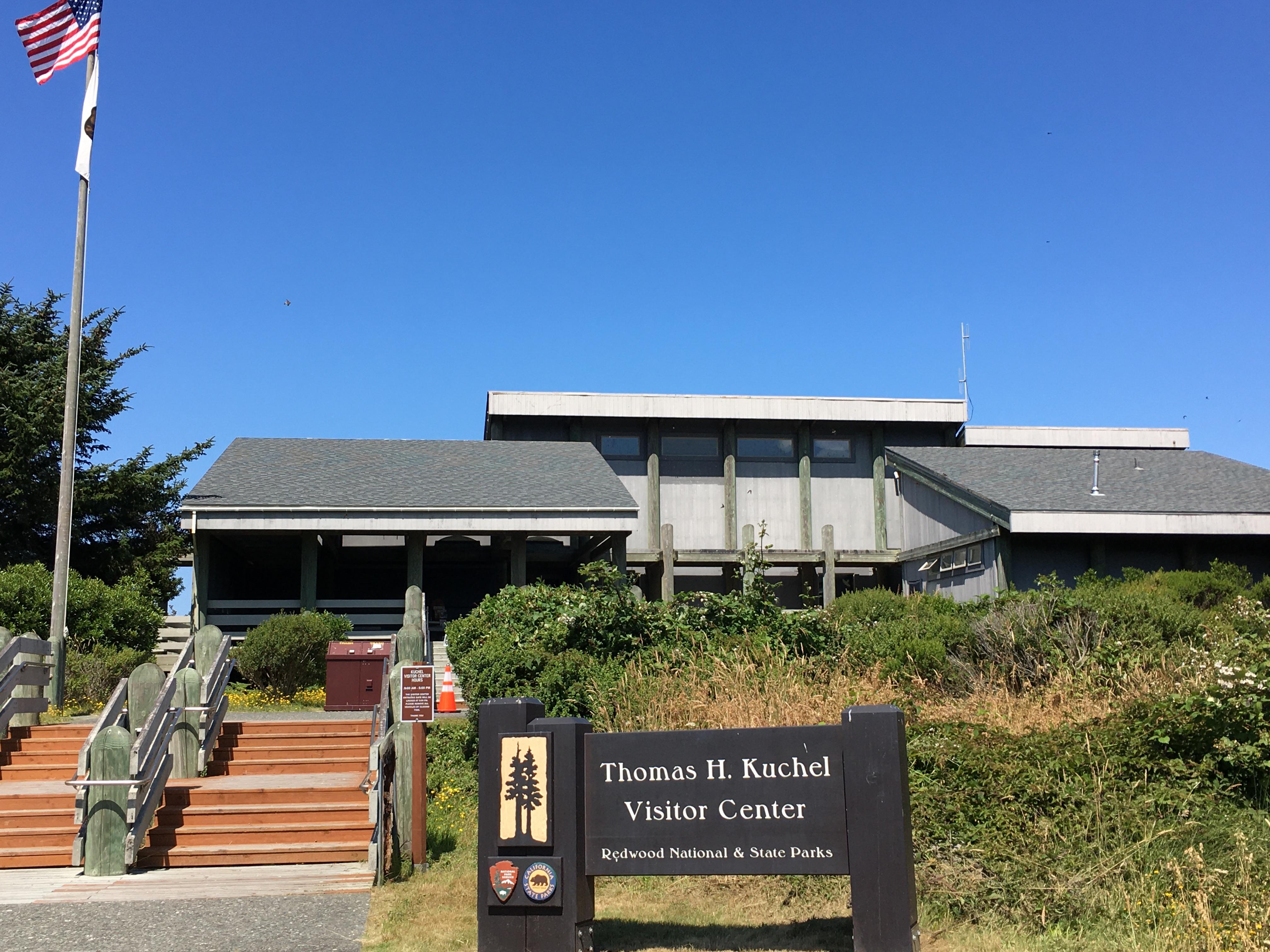
The Uncertain Future of California State Parks: Balancing Budget Cuts and a Booming Visitor Experience
California State Parks have long been a cherished resource for both locals and visitors from around the world. Yet, as recent news reports highlight, these parks now face budget cuts and financial challenges amid an ever-growing influx of visitors. The tension between fiscal restraint and the desire to keep public spaces vibrant and accessible has left many wondering: How will these beloved natural treasures adapt to meet the demands of a booming tourism industry while grappling with reduced funding?
California State Parks Budget Cuts Impact on Visitor Experience
Assistant Deputy Director Adrian Contreras recently warned that the state parks department had to absorb an 8% reduction in budget this year—a cut that resonates deeply with our communities. The austerity measures spark concerns about whether California State Parks can continue to offer the same level of service visitors and outdoor enthusiasts have come to expect. With environmental programs like habitat restoration and endangered species protection already operating on thin margins, further budget constraints could lead to visible cuts in service quality over time.
Long-tail keyword: “California state parks budget cuts and visitor experience” has become a hot topic. Critics argue that while visitor attendance is up, the underlying infrastructure and staff support struggles to keep pace with demand. Whether it’s maintaining trails or safeguarding natural habitats, the budget cuts mark a turning point, revealing potential disparities between the influx of guests and dwindling reserves of public funds. As someone who has seen the benefits of accessible state parks firsthand, it is concerning to witness such short-sighted financial policies that jeopardize the long-term sustainability of these parks.
Federal Funding and Critical Environmental Programs
Federal funding—although not directly tied to daily visitor services—plays an indispensable role in protecting California’s diverse ecosystems. From endangered species to vital habitat restoration, these programs often depend on outside assistance to fill funding gaps left by state budget cuts. The intersection of local fiscal responsibility and federal financial support has become a crucial battleground.
Long-tail keyword: “role of federal funding in state park environmental programs” captures the essence of this conundrum. Federal funding ensures that even as visitor services struggle, environmental programs can continue their vital work. Without it, beloved projects may be scaled back. Many environmentalists argue that such measures could lead to irreversible harm to habitats that take decades to develop. Thus, critics have urged both state and federal authorities to review funding allocations to ensure that parks remain as robust sanctuaries for flora and fauna as they are for human recreation.
The Coachella Valley Experience Amid Fiscal and Environmental Challenges
The Coachella Valley is more than just a backdrop for music festivals and trendy events—it is a living mosaic of natural wonders, cultural hubs, and recreational destinations. From sunny skies to breezy winds and clear weather, the valley continues to attract visitors, even as the state parks within its borders confront financial headwinds. What emerges is a complex narrative in which the community’s economic and cultural vibrancy struggles to match the fiscal reality of maintaining public lands.
Long-tail keyword: “Coachella Valley outdoor recreation and budget challenges” underscores how intertwined these issues are in the public consciousness. The region is witnessing robust visitor numbers that bolster local economies, yet the pressures of preserving natural environments remain intense. As locals and tourists alike flock to trails like the recently reopened Gene Autry Trail, the wider system of maintenance and preservation is feeling the strain of budget cuts and additional responsibilities.
Innovative Solutions to Keep Attractions Thriving Despite Budget Constraints
In light of these financial challenges, creative and forward-thinking solutions are emerging. State parks officials, along with partner organizations and dedicated staff, are seeking novel approaches to ensure that the downsizing of budgets does not translate into a diminished visitor experience. This involves scaling back less critical programs while maintaining essential services, along with leveraging public-private partnerships and community-driven initiatives.
Long-tail keyword: “innovative funding strategies for California state parks” reflects the growing focus on new financial models. The potential for local businesses and community organizations to collaborate with state parks could be transformative. One example is the Living Desert Zoo’s partnership with Luchador Brewing Company to help support endangered species conservation, such as the rare Mexican wolf. Initiatives like these not only enhance funding streams but also foster community engagement and awareness about conservation efforts.
Moreover, events like the Kidchella Festival and the cultural transformation witnessed with murals in Desert Hot Springs offer glimpses of creative synergy throughout the region. These events generate community spirit and economic growth, potentially opening the door for alternative funding channels. By integrating innovative funding strategies and community outreach, the state parks might be poised to weather the financial storm and continue serving as both a recreational haven and a sanctuary for our natural heritage.
The Impact on Sustainable Tourism in California
Tourism in California and specifically in the Coachella Valley has flourished in the wake of the pandemic. With the “love for outdoor recreation” on the rise, visitor numbers are increasing, highlighting an urgent need to balance accessibility with sustainability. Critics contend that high visitor turnout, while beneficial to the economy, places additional pressure on park resources and natural habitats, exacerbating the challenges posed by budget cuts.
Long-tail keyword: “sustainable tourism strategies for California parks” is central to this discussion. When visitor demand increases, so too does the wear and tear on park facilities and natural resources. State parks managers are compelled to prioritize maintenance work and allocate funds judiciously—a tough balancing act when funds are shrinking.
Furthermore, as state parks struggle to expand their services, federal cuts in funding for environmental programs might lead to scaled-back conservation efforts. This, in turn, could affect biodiversity and long-term sustainability. As the cost of maintaining trails, protecting endangered species, and ensuring adequate visitor services rises, state officials must develop multi-pronged strategies that address immediate needs while planning for a sustainable future. The challenge is not merely fiscal; it is one of preserving California’s natural legacy for the next generation.
The Role of Community Engagement in Shaping a Positive Future
In these trying times, community engagement and public-private partnerships have become essential in ensuring that California’s state parks continue to thrive. Local events like the Kidchella Festival bring families together and foster an appreciation for nature, while art initiatives transform public spaces into cultural canvases, thereby boosting local pride and attracting new visitors. All of these community-centered activities, however, rely on the continued support and investment in our parks and public spaces.
Long-tail keyword: “community partnerships for restoring state park services” aptly describes the transformative potential of localized efforts. By harnessing the power of community, local leaders and park administrators can implement supplementary services and funding streams that counterbalance the effects of tightened budgets. Engaging local businesses, nonprofits, and volunteer groups creates a resilient and proactive network, one that is better prepared to face economic uncertainties while capitalizing on the region’s undeniable cultural and natural assets.
Comparing California’s State Parks to National Parks: Lessons and Warnings
The stark contrast between the staffing and budget challenges faced by federal parks like Yosemite and those of California State Parks offers insightful lessons for policymakers. While national parks grapple with severe staffing shortages—often resorting to having rangers clean restrooms—the state parks have managed to maintain a steady if not growing, stream of visitors. This juxtaposition brings into focus the importance of adequate funding and workforce support.
Long-tail keyword: “comparing staffing challenges in national and state parks” reminds us that complacency in state-level support might someday mirror the crises seen at the federal level. Although current strategies may hold off immediate public service declines, the fact that California is not immune to broader financial pressures should serve as a wake-up call. By studying the struggles occurring in national parks, state policymakers can pre-empt similar trends, ensuring that the visitor experience remains a non-negotiable priority.
The Economic Implications: Tourism, Local Business, and Beyond
The economic impact of California’s state parks and the broader tourism industry in the Coachella Valley cannot be understated. As visitors flock to local attractions—from the scenic trails of the Gene Autry Trail to the cultural vibrancy of community art projects—the economic benefits ripple across the region. Restaurants, small businesses, and hotels all enjoy the influx of patrons. Yet, the consequent economic boon also brings challenges in terms of infrastructure maintenance and environmental preservation.
Long-tail keyword: “economic impact of budget cuts in California tourism” is crucial here. The tourist dollars pumped into the local economy underscore the need for a balanced approach to fiscal responsibility. If public spaces suffer from reduced maintenance or become overburdened, the very attributes that make these destinations attractive could be compromised. This interplay of economics and conservation calls for strategic investments both in preventive infrastructure upgrades and in fostering sustainable tourist behaviors, ensuring that the economic lifeblood of the region continues to flow without sacrificing the environment.
A Vision for the Future: Investment, Innovation, and Resilience
Looking forward, the conversation about budget cuts and visitor services in California State Parks must evolve into a broader dialogue about the sustainability of public lands in an era of rapid growth. The golden thread uniting all these narratives is the need for continued investment—both from state coffers and through innovative revenue streams. Creativity, regional collaboration, and long-term strategic planning are essential to surmounting the challenges ahead.
Long-tail keyword: “innovative solutions for sustainable state park funding” encapsulates the call to action. As weather patterns shift, visitor numbers climb, and environmental programs hover at the edge of financial feasibility, public officials and community stakeholders must work hand in hand. The goal is to craft a resilient plan that not only addresses the immediate impacts of budget cuts but also lays the groundwork for sustained investment in public health, cultural enrichment, and economic vitality. Only by recognizing and addressing these intertwined challenges can California ensure its parks remain gems for both current and future generations.
Conclusion: A Call to Action for Our Natural and Cultural Legacy
In conclusion, the current financial challenges facing California State Parks offer a stark reminder of the fragile balance between economic growth and environmental conservation. As the Coachella Valley continues to draw visitors and celebrate its rich cultural tapestry—through its stunning natural landscapes, creative community endeavors, and dynamic tourism events—the need to invest in sustainable infrastructure and resilient management practices has never been more urgent.
Long-tail keyword: “sustaining California state parks through community engagement and innovation” is not just a search term—it’s a manifesto for action. From cautious fiscal management and federal support of environmental programs to innovative partnerships and community-led initiatives, there is a blueprint available for success. The path forward calls for a collaborative spirit, an unwavering commitment to environmental stewardship, and a deep appreciation for the intrinsic value our state parks hold as centers for recreation, education, and cultural expression.
The conversation about budget cuts in California State Parks and their impact on tourism and local communities is far from over. It is incumbent upon policymakers, environmental advocates, local business owners, and every passionate visitor to engage in this dialogue. Let us commit to a future that honors our natural heritage, supports sustainable tourism, and invests in the cultural and economic vibrancy that defines regions like the Coachella Valley. Only together can we forge a resilient path forward—one that safeguards our communal legacy while welcoming visitors to experience the rugged beauty and vibrant culture of California’s great outdoors.
Originally Post From https://www.nbcpalmsprings.com/therogginreport/2025/04/19/california-state-parks-brace-for-budget-cuts-but-aim-to-keep-visitor-services-intact
Read more about this topic at
National Parks Traveler Podcast | Parks Under Pressure
National Parks Traveler Podcast Episode 310
